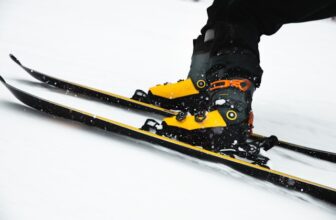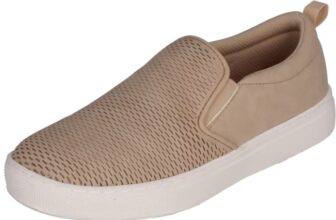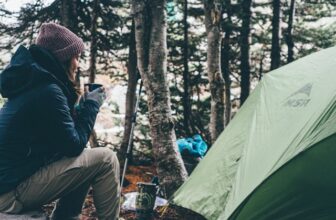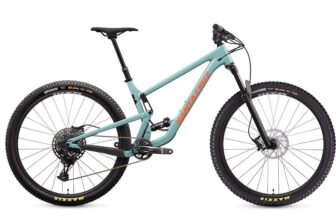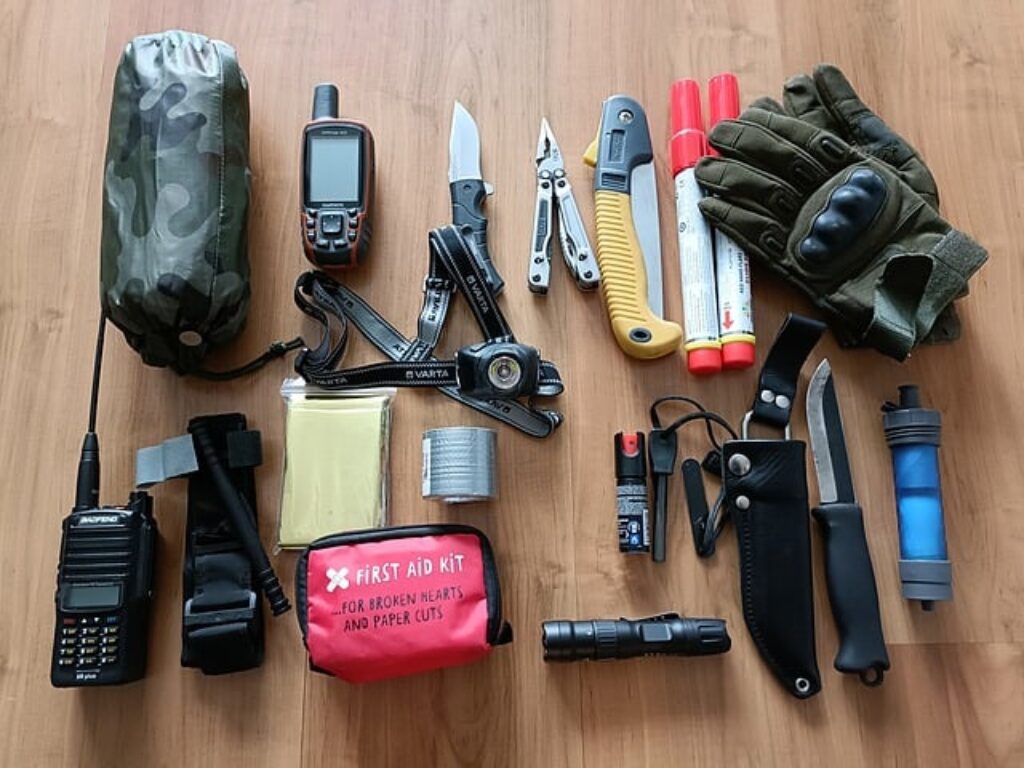
The concept of off-the-grid living has gained significant traction in recent years. Whether driven by a desire for self-sufficiency, concerns over societal instability, or the simple allure of nature, more and more people are exploring the idea of prepping for emergencies. At the heart of this lifestyle is survival gear—those tools that ensure you can not only survive but thrive in an off-grid situation. In this guide, we will cover the essential survival gear every prepper should own, helping you build a kit that will serve you well in any situation, whether it’s an unexpected disaster, a camping expedition, or long-term off-grid living.
1. Water Filtration and Purification Systems
Water is the most crucial survival resource, and having access to clean water is essential. The average person can survive three days without water, but even a few hours of dehydration can affect cognitive function and physical performance. In off-the-grid situations, you won’t have the luxury of turning on a faucet, making water filtration and purification systems a must-have.
Key Tools:
- Portable Water Filters: Products like the LifeStraw or Sawyer Mini are small, portable filters that can turn lake, river, or stream water into drinkable water. These filters remove bacteria and parasites, and their portability makes them a staple in every bug-out bag.
- Water Purification Tablets: Tablets like Potable Aqua are lightweight and kill waterborne pathogens, ensuring water safety in more severe conditions.
- Gravity-Fed Water Filters: For long-term survival, a larger gravity-fed system like a Berkey or Platypus GravityWorks can filter larger amounts of water over time.
- Collapsible Water Containers: It’s also crucial to have a way to transport and store water. Hydrapak Seeker containers, for example, are foldable, easy to store, and durable.
| Price history for LifeStraw Personal Water Filter for Hiking, Camping, Travel, and Emergency Preparedness, 1 Pack, Blue | |
|---|---|
Latest updates:
|
|
2. Fire-Starting Tools
Fire provides warmth, a means of cooking, and a way to purify water. In some cases, it can even act as a signal for rescue teams. Reliable fire-starting tools are a necessity in every prepper’s gear list.
Key Tools:
- Ferrocerium Rods: Unlike matches and lighters, which can become wet or run out of fuel, a ferrocerium rod can produce sparks in virtually any condition. Tools like the Bayite Ferro Rod are compact and long-lasting, providing thousands of strikes.
- Waterproof Matches: For back-up, waterproof matches like the UCO Stormproof Matches are good to keep handy. They’re windproof, waterproof, and burn even after being submerged.
- Magnesium Fire Starters: These offer another layer of redundancy. By scraping off magnesium shavings and using a spark from a flint, you can start a fire even in damp conditions.
- Tinder: Having dry tinder is essential for starting fires in challenging environments. Products like WetFire Tinder or natural materials like cotton balls soaked in petroleum jelly can ignite easily and burn long enough to get larger kindling going.
3. Shelter and Warmth
While fire is important, you also need to protect yourself from the elements. Exposure to cold and wet conditions can lead to hypothermia, even in temperatures as high as 50°F (10°C). Proper shelter gear will keep you safe and comfortable.
Key Tools:
- Emergency Survival Blankets: Lightweight and compact, emergency blankets like the SOL Emergency Blanket reflect up to 90% of body heat and are a crucial part of your gear.
- Tarp and Cordage: A durable tarp, such as the Aqua Quest Defender Tarp, can be used to build a makeshift shelter. Along with 550 Paracord, you can create shelters to keep out wind, rain, and snow.
- Bivvy Bags: For a more enclosed, portable shelter, a bivvy bag like the SOL Escape Lite Bivvy provides added warmth and weather protection.
- Sleeping Bag: For long-term off-grid living, a good sleeping bag is essential. Look for lightweight, compressible bags like the Nemo Disco 15 that are rated for the coldest temperatures you expect to face.
4. Food Gathering and Preparation Tools
You can survive for about three weeks without food, but that doesn’t mean it’s ideal or advisable to go that long. Having reliable food gathering and preparation tools will keep you sustained and your morale high.
Key Tools:
- Fishing Kit: In a survival scenario near water, a basic fishing kit is essential. Products like the Best Glide ASE Survival Fishing Kit provide hooks, line, and other essentials to catch fish for sustenance.
- Hunting Gear: Depending on local wildlife, hunting gear can be extremely useful. A compact slingshot or a small game snare kit will allow you to trap animals for food.
- Portable Stove or Cooking Gear: Having the ability to cook your food safely is vital. Portable stoves like the MSR PocketRocket or solid fuel stoves are excellent for heating food and boiling water when a campfire isn’t an option.
- Mess Kit: Lightweight and multi-functional cookware like the GSI Outdoors Halulite Microdualist will allow you to prepare meals easily while keeping your pack weight low.
- Emergency Food Supply: In addition to gathering food, it’s smart to have a stash of non-perishable emergency food. Freeze-dried meals from brands like Mountain House or ReadyWise are lightweight, long-lasting, and easy to prepare.
- Includes a variety of jigs, flies, hooks, leaders, tube of salmon eggs or crappie nibbles, split shot, fishing line, bobbers, and a spoon.
- Includes a U.S. Military approved Derma-Safe utility knife; and survival fishing kit instructions and stickers.
5. Navigation Tools
When you’re off the grid, especially in wilderness areas, you can easily lose your sense of direction. Cell phone signals and GPS may not be reliable, so traditional navigation tools are essential.
Key Tools:
- Compass: A high-quality compass like the Suunto MC-2 is an indispensable tool for navigation when electronic devices fail.
- Topographic Maps: Always carry physical topographic maps of the area where you’ll be. These detailed maps provide critical information about the terrain, water sources, and potential shelter locations.
- GPS Devices: For added redundancy, a durable, handheld GPS like the Garmin GPSMAP 66i can provide detailed navigation and communication through satellite messaging.
- Signal Mirror and Whistle: In emergencies, a signal mirror and whistle can help alert rescue teams to your location.
| Price history for Garmin GPSMAP 66i, GPS Handheld and Satellite Communicator, Featuring TopoActive mapping and inReach Technology, Multi | |
|---|---|
Latest updates:
|
|
6. Multi-Purpose Tools
Having a set of versatile tools that can perform multiple functions will save space in your pack and ensure you’re prepared for a variety of situations.
Key Tools:
- Multi-Tool: A high-quality multi-tool like the Leatherman Wave Plus offers an array of tools, including pliers, screwdrivers, a knife, and scissors, all in one compact package.
- Fixed Blade Knife: A reliable knife is invaluable for survival. The Morakniv Companion is an affordable and durable fixed-blade knife that’s perfect for cutting, carving, and even batoning wood.
- Folding Shovel: A compact, lightweight shovel like the Gerber Gorge Folding Shovel is useful for digging fire pits, building shelters, or burying waste.
7. Lighting and Power
When the grid goes down, artificial light sources and power for critical devices like radios or GPS units become essential.
Key Tools:
- Headlamp: A good headlamp like the Black Diamond Spot 400 is lightweight, durable, and keeps your hands free while providing ample light in the dark.
- Solar Chargers: To keep essential electronics like your GPS, phone, or rechargeable batteries powered, a portable solar charger like the Anker PowerPort Solar is invaluable in an off-grid scenario.
- Battery Bank: A high-capacity battery bank such as the Goal Zero Venture 35 can store extra power for devices, offering several recharges without relying on a wall outlet.
8. First Aid Kit
Injuries, even minor ones, can escalate quickly in off-grid scenarios without proper care. A comprehensive first aid kit is non-negotiable.
Key Tools:
- Comprehensive First Aid Kit: Kits like the Adventure Medical Kits Mountain Series include essentials for treating wounds, burns, and sprains, plus medical supplies for more serious injuries.
- Trauma Supplies: Include trauma-specific gear such as QuickClot, Israeli Bandages, and a tourniquet for stopping severe bleeding in emergencies.
- Personal Medications: Don’t forget to pack any personal medications or supplies you may need, as pharmacies won’t be readily accessible in off-grid situations.
9. Communication Tools
When you’re living off the grid, particularly in remote areas, staying in contact with others or sending distress signals could save your life.
Key Tools:
- Two-Way Radios: In case of group survival scenarios, two-way radios like the Midland GXT1000VP4 provide reliable communication even in areas without cellular service.
- Emergency Beacon: A Personal Locator Beacon (PLB) such as the ACR ResQLink 400 can send a distress signal to rescue teams, transmitting your GPS coordinates in life-threatening situations.
- Whistle: An emergency whistle is lightweight and a great backup signaling device for getting attention in the wilderness.
| Price history for Midland GXT1000VP4 - 50 Channel GMRS Two-Way Radio - Long Range Walkie Talkie with 142 Privacy Codes, SOS Siren, and NOAA Weather Alerts and Weather Scan (Black/Silver, Pair Pack) | |
|---|---|
Latest updates:
|
|
10. Clothing and Personal Protection
Choosing the right clothing is critical for protecting yourself from environmental hazards and staying comfortable during extended off-the-grid living.
Key Tools:
- Layered Clothing System: Pack moisture-wicking base layers, insulating mid-layers like fleece or down jackets, and waterproof outer layers to adjust to fluctuating weather conditions.
- Durable Footwear: Waterproof, insulated boots like the Salomon Quest 4D GTX are essential for traversing tough terrain while keeping your feet dry and supported.
- Gloves and Hat: Gloves for both warmth and protection, along with a wide-brimmed hat or beanie, will help regulate your body temperature and provide sun protection.
Conclusion
Prepping for off-the-grid living requires careful planning and the right survival gear. The essentials listed above will not only ensure your basic needs—water, fire, food, shelter, and safety—are met but also equip you with the tools to tackle unforeseen challenges. Remember, redundancy is key: having backups for your most critical items, like water filtration, fire-starting, and navigation tools, ensures you’re prepared for the unexpected. With the right gear, knowledge, and mindset, you can face off-the-grid living or emergency scenarios with confidence and resilience.


 Amazon.com
Amazon.com
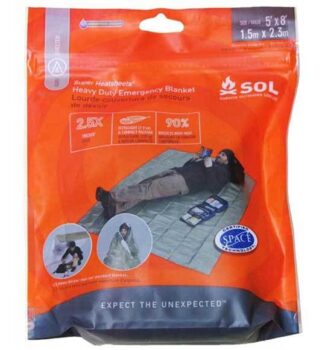
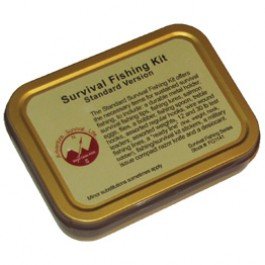

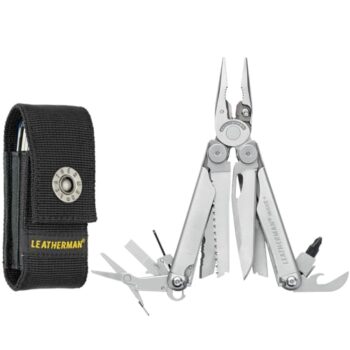
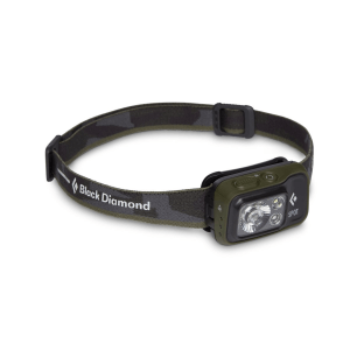
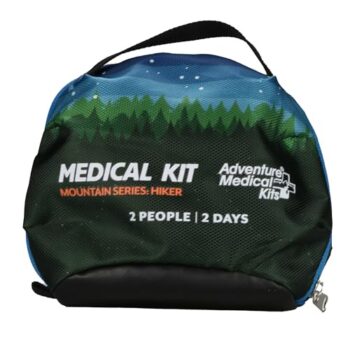
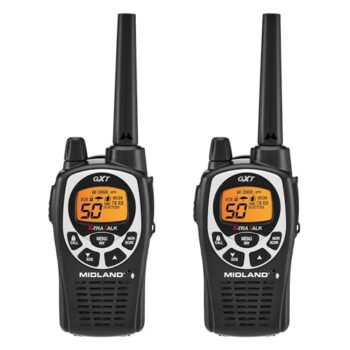
))/3505929.json?hei=600&wid=600&$Soc_facebook$)


